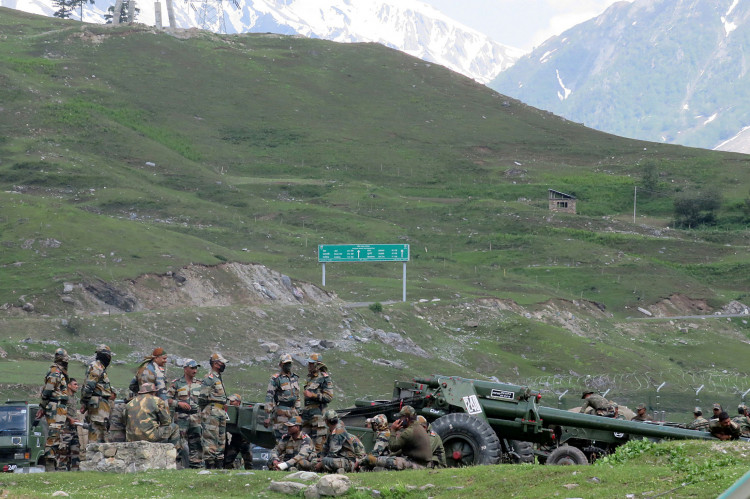The welcome ceasefire between India and Pakistan along the Line of Control in Kashmir implemented in late February will eventually leave India free to focus its military might against China.
Triggering this possibility is the surprising pledge on February 25 by senior officers of both the Indian Army and the Pakistan Army to abide by the hitherto disregarded 2003 ceasefire agreement. The disdain for this ceasefire before now can be seen in data showing that in 2020, both India and Pakistan violated the ceasefire 5,133 times. Their mutual transgressions led to the deaths of at least 50 civilians and 24 security personnel while wounding hundreds more.
But in mid-March, Gen. Qamar Javed Bajwa, Chief of the Army Staff of the Pakistan Army, made the stunning announcement it was time for Pakistan and India to "bury the past and move forward." He contends peace between the two nuclear armed neighbors will help "unlock" the economic potential of South and Central Asia.
"We feel it is time to bury the past and move forward," said Bajwa.
He said the onus for a meaningful dialogue leading to peace rests with India since Pakistan now stands ready to do the same. He noted India "will have to create a conducive environment, particularly in Kashmir."
Political analysts point out the India-Pakistan ceasefire announcement came shortly after China and India agreed to a military disengagement along the Line of Actual Control in Indian-controlled Ladakh on February 10.
Troops of the People's Liberation Army Ground Force and the Indian Army simultaneously disengaged along the dangerous frontline bordering Pangong Tso (Pangong Lake) spanning eastern Ladakh in India and West Tibet.
Analysts said the ceasefires against India by both China and its ally, Pakistan, might have more to do with economic considerations, as revealed by Bajwa. They argue the driving force behind the two ceasefires is the urgent need to mitigate the immense economic impacts of both the conflict along the LOC and the raging COVID-19 pandemic, which is peeling money away from the military.
On the other hand, the India-Pakistan ceasefire will ultimately redound to India's benefit, contends Stanford scholar Asfandyar Mir, a specialist in South Asian security affairs.
He argues India agreed to the LOC ceasefire with Pakistan to free-up military forces deployed against Pakistan and position them against China. Mir said the only way to bring this about is to bring down temperatures with Pakistan.
"Both are plausible, but I'd speculate the China angle played into this more," Mir believes.
In January, the Indian Army said I Corps, an offensive strike corps originally tasked with attacking Pakistan, will be re-tasked to take on the PLAGF. The army's XVII Corps, its sole mountain strike corps, now has the PLAGF as its target.
Paul Staniland, an associate professor of political science at the University of Chicago and a South Asia expert, also takes the same view.
"If Pakistan is indeed looking to move toward a new regional role, embracing geopolitics, reducing tensions with India is a must, and if India is going to pivot to deal with a rising China, it has reasons to want to calm relations with Pakistan," said Staniland.






